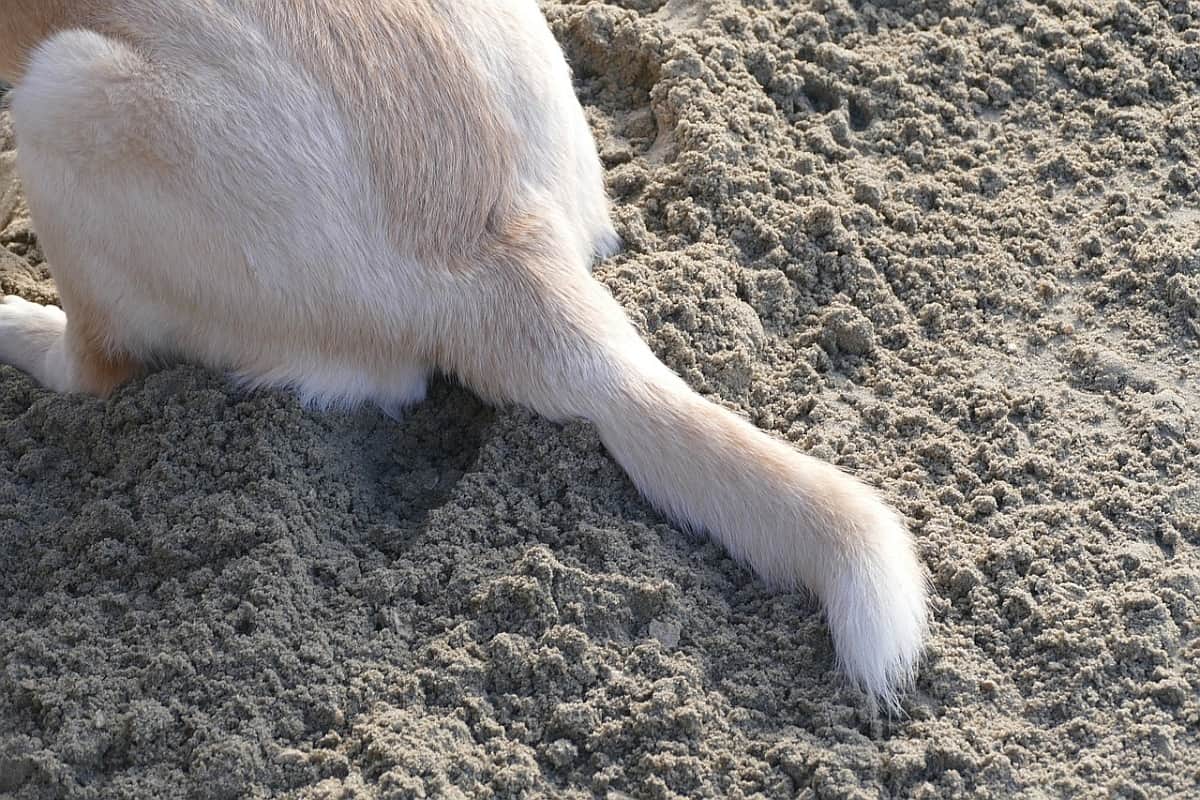
Why Does My Dog Tuck Her Tail When She Eats?
My beloved golden retriever, Luna, always exhibited peculiar behavior during her mealtimes. Instead of wagging her tail enthusiastically as expected, she would tuck it tightly between her legs, almost as if she were trying to hide it. This strange habit sparked my curiosity and led me on a journey to uncover the reasons behind it.
I initially assumed that Luna’s tucked tail signaled aggression or fear, but after observing her closely, I realized it was neither. She seemed completely at ease and undisturbed while eating, with no signs of distress or anxiety. Determined to find the truth, I consulted with veterinarians, animal behaviorists, and fellow dog owners, and the following answers emerged.
Body Language and Communication
Tail Tucking as a Sign of Submissiveness
In the canine world, tail tucking often signifies submission or deference to a dominant animal. However, Luna was the only dog in our household, so this explanation didn’t seem to apply. Nevertheless, it’s important to note that some dogs may exhibit submissive behavior even when they’re alone, especially if they have a history of trauma or abuse.
Maintaining Balance and Comfort
While eating, dogs adopt various positions to maintain their balance and ensure comfort. Luna’s tucked tail may simply have been a means of keeping it out of the way while she focused on her meal. This is particularly common in large dogs with long tails that could potentially interfere with their ability to eat comfortably.
Evolutionary Origins
Protection from Predators
In the wild, dogs evolved to eat quickly and efficiently to avoid attracting predators. Tucking the tail between the legs may have been an instinctive behavior that helped to protect this vulnerable area from potential threats.
Defense against Attacks
If a dog were to be attacked while eating, a tucked tail could reduce the likelihood of injury to the vital organs located in that region. This behavior is more pronounced in certain breeds, such as herding and guard dogs, which have a strong protective instinct.
Other Factors to Consider
Medical Conditions
In rare cases, a tucked tail during eating could be a sign of an underlying medical condition, such as pain or discomfort in the tailbone or anal area. If you notice any other unusual symptoms, such as lethargy or difficulty defecating, consult a veterinarian promptly.
Anxiety and Stress
Some dogs may tuck their tails when eating if they feel anxious or stressed in their feeding environment. Loud noises, unfamiliar people, or other potential stressors can trigger this behavior. Providing a calm and consistent mealtime routine can help alleviate any anxiety.
Tips and Expert Advice
-
Observe your dog’s body language as a whole.
Tail tucking on its own may not be indicative of any issues, but if accompanied by other signs of anxiety or distress, it’s worth seeking professional advice.
-
Create a calm and stress-free mealtime environment.
Feed your dog in a quiet and private area, away from distractions or potential stressors.
-
Ensure your dog’s tailbone and anal area are healthy.
If you notice any swelling, discharge, or other abnormalities, consult a veterinarian to rule out any underlying medical conditions.
Frequently Asked Questions
Q: Why does my dog tuck her tail when she drinks water?
A: This behavior is similar to tail tucking during eating. It could be a sign of submission or deference, a means of maintaining balance and comfort, or an evolutionary instinct to protect the vulnerable tailbone area.
Q: Is it bad for my dog to tuck her tail when she eats?
A: In most cases, tail tucking during eating is not a cause for concern. However, if it’s accompanied by other unusual symptoms or if you suspect an underlying medical condition, it’s advisable to consult a veterinarian.
Conclusion
Understanding why your dog tucks her tail when she eats can provide valuable insights into her behavior and well-being. While some dogs may do so out of instinct or for comfort, it’s essential to rule out any potential underlying medical conditions or sources of anxiety. By observing your dog closely and creating a positive and stress-free mealtime environment, you can ensure that she enjoys her meals with peace and comfort.
If you have any further questions or concerns, don’t hesitate to consult with a qualified veterinarian or animal behaviorist. They can provide personalized advice and guidance tailored to your dog’s specific needs.

Image: dogshint.com

Image: knsk.org
21 Reasons Why do Dogs Tuck their Tails? | Dogs – Simplydogowners Feb 8, 20243. They are feeling scared of their new environment. A dog will tuck its tail between its legs whenever it is in an unknown environment and is feeling insecure. This happens when it experiences anxiety, vulnerability, and confusion about the unfamiliar things around it.